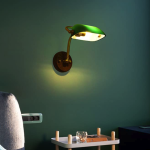Introduction
London, the capital of England, is a vibrant and dynamic city that attracts millions of visitors every year. One of the reasons for its charm is the way it is lit up at night – from the iconic street lamps to the glittering high-rise buildings. Have you ever wondered what goes into creating the perfect lighting for such a diverse city? In this article, we will decode the London lighting scene, exploring the techniques and technologies that make it a shining star in the night sky.
The History of London Lighting
London has a long history of lighting up the night. The first gas street lamps were installed in 1807, and by the early 1900s, the city was ablaze with over 50,000 gas lamps. However, these lamps were costly to maintain and had limited lighting capabilities, prompting a switch to electric lighting in the 1920s. Today, London’s lighting infrastructure is a mix of traditional gas lamps, energy-efficient LEDs, and advanced smart lighting systems.
The Iconic London Street Lamps
One of the most recognizable parts of London’s lighting system is the Victorian-era street lamps that line many of the city’s roads. These lamps feature ornate black metalwork and a distinctive yellow-orange glow. The lamps are still operational today and are a testament to the city’s commitment to preserving its heritage. In recent years, the city has also installed new LED street lamps that are more energy-efficient and provide better lighting.
The Rise of LED Lighting
LED lighting has taken the lighting industry by storm, and London is no exception. The city has been retrofitting its lighting infrastructure with LED lights, which are more energy-efficient, longer-lasting, and provide better lighting. LED technology also allows for dynamic color changing and dimming capabilities, making it perfect for lighting up landmarks and monuments. For example, the Shard, one of the tallest buildings in Europe, features over 11,000 LED lights that create a stunning light show every night.
The Smart Lighting Revolution
The next frontier in lighting technology is smart lighting systems. These systems use sensors and data analysis to provide more efficient and effective lighting that is tailored to the specific needs of a location. London is at the forefront of this revolution, with the installation of smart lighting systems in major areas such as Regents Street and the River Thames. These systems can adjust lighting levels based on foot traffic, weather, and other factors, leading to significant energy savings and increased safety.
The Future of London’s Lighting
As technology continues to evolve, so too will London’s lighting scene. The city has set a goal of becoming carbon-neutral by 2030, which means that energy-efficient lighting will play an even bigger role in the future. Smart lighting systems will also become more prevalent, providing lighting that not only saves energy but also improves safety and enhances the overall aesthetic of the city.
Conclusion
London’s lighting system is a testament to the city’s commitment to preserving its history while embracing the latest technology. From Victorian-era street lamps to advanced smart lighting systems, London is illuminated in a way that is both functional and beautiful. As technology continues to evolve, we can only imagine what the future holds for London’s lighting scene, but one thing is for sure – it will continue to shine bright.





